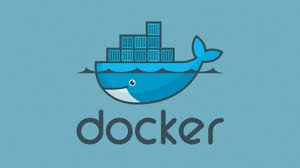As 2015 gets underway, let’s have a look at the technologies, trends and concepts that are likely to have the biggest impact on IT departments and data centres in 2015.
Of courses, most of these ‘trends’ are not new. They’ve already reached a certain level of maturity which means they are certain to feature in our decision-making throughout the year.
PaaS
Platform as a Service was always seen as the domain of the developer. The key enabler in 2015 that will take PaaS from being ‘cool’ to being ‘used’ tech is the commoditization of development. Using PaaS will enable the company to deliver services faster, without needing to worry about the normal infrastructure overhead of more traditional IT service delivery. This will help companies leverage PaaS to derive a competitive edge.
APIs
APIs will be the default element of any application or platform worth considering in 2015, thanks to two key benefits. Firstly, APIs enable integration of third party systems to quickly create functions that are not possible in an on-premise closed system. Secondly, they allow system-to-system data federation without any duplication of work or data.
Docker
Docker is a standardised platform allowing developers to run the same code, unchanged, on laptops, data centre VMs and any cloud. The principal of containers may not be new, but Docker has wrapped simplicity and tooling around its solution and with the likes of Google and IBM contributing to its development and tool sets, adoption in open source community is driving continual improvements.
Commodity Analytics
What Gartner refers to as Advanced, Pervasive and Invisible Analytics, I call, Commodity Analytics. Without belittling the great work of data scientists, analytics (in the broadest sense of the word) is increasingly part of our everyday lives. From checking the weather or planning our route to work, analytics is no longer the preserve of the enterprise boardroom. It now allows us to make better micro decisions, as well as the big ones.
Computing everywhere
Computing power is everywhere and the proliferation of high-powered mobile computing has helped to give application developers much more freedom, when developing mobile apps, than ever before. Dual core chips have become commonplace along with upwards of 2GB RAM and 128GB flash disks in phones, making mobile computing the primary business tool. If you don’t have a dedicated mobile app to mirror or complement your on–premise or cloud-delivered service, you will be left behind.
Commoditization of development
With the UK government stating that coding classes will start for four year olds from 2015, the only way is ‘up’ for the quantity and quality of developers in the UK.
In the next year, however, we can expect to see development becoming much more common place. As supply chains become more complex and time-to-productivity becomes more important, developers can help organizations gain a competitive edge by developing systems that allow them to react quicker, deliver sooner and be better informed.
Hybrid cloud
Hybrid will be the way for CIOs to make public cloud a part of their architectures. Using a Software Defined Infrastructure (SDI) to transform the network, hybrid cloud will enable cloud bursting for compute and storage using simply a few clicks. But cloud isn’t a ‘one size fits all’ solution – you need to understand what the cloud can offer your applications, which ones should be in the cloud and then architect for this. Hybrid cloud is then the gateway to the best service delivery with a highly resilient infrastructure, near unlimited scale and spin up/spin down commercial flexibility.
Cloud/client architecture
Cloud/client architecture is becoming more prevalent in the modern world of application delivery. While there are still servers in the back end, it’s now all about single instance multitenant applications on a massive scale and delivering to mobile devices on demand anywhere, at any time.
Software Defined Everything (SDE)
Software defined data centers may, at last, be coming of age. Pioneered by Internet-scale companies, SDE has matured dramatically. Fuelled by services companies such as Mirantis that help to de-risk, make adoption easier and support it in the event of an issue, the SDDC is now in the world of the SME.
Risk based security and self-protection
Perimeter security is no longer enough. To maintain a safe, open and secure cyberspace, we must look to new methods that will keep us ahead of the threats in 2015. What’s needed is a security approach that automatically links context-aware security to abstract security, giving the best possible experience, flexibility and productivity for the user. These systems will need to be a combination of self-protecting applications, operating systems that are paranoid of their applications and inline dynamic perimeter security that is just plain schizophrenic! No small task!
David Fearne is UK & Ireland technical director at Arrow ECS


